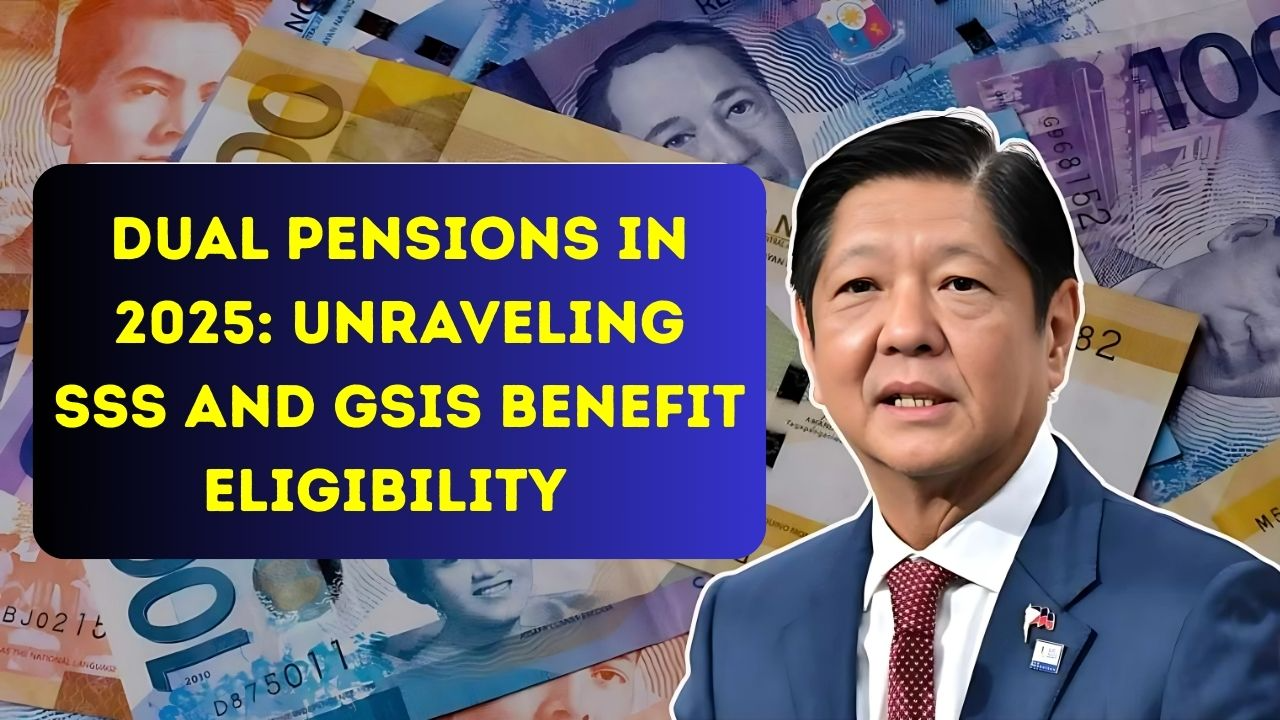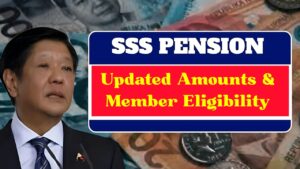GSIS : For millions of Filipino workers who have transitioned between private and public sector employment, the question of receiving dual pensions from both the Social Security System (SSS) and Government Service Insurance System (GSIS) remains crucial for retirement planning. As of 2025, retirees can legally claim both SSS and GSIS pensions, but only under strict conditions that require meeting independent eligibility requirements for each system.
Understanding the Two Pension Systems!
SSS Coverage and Requirements
The Social Security System covers private-sector employees and voluntary members such as OFWs and self-employed workers. For SSS pension eligibility, members must have a minimum of 120 monthly contributions (10 years) and reach age 60 if separated from work or 65 for mandatory retirement.
GSIS Coverage and Requirements
The Government Service Insurance System serves government workers, including teachers, uniformed personnel, and civil servants. GSIS requires at least 15 years of government service and retirement age of 60 or older.
Dual Pension Eligibility Rules for 2025
Independent Qualification Requirements
Under current guidelines, retirees may qualify for both pensions only if they meet the eligibility requirements for each system independently. Simply having contributions in both systems does not automatically entitle a member to receive dual pension payouts.
Critical Restrictions!
The most important rule governing dual pensions is the separation requirement. The periods of contribution to each system must be separate, without overlap. The government enforces a “conflict rule” to prevent duplicate benefits for the same period of work.
Refund Consequences
If you refunded your SSS contributions after moving to government service, you lose your right to an SSS pension permanently. This is one of the most common mistakes that disqualifies workers from dual pension benefits.
Portability and Totalization Benefits
Combined Service Credit
RA 7699 lets creditable service be totalised so that each System pays its pro-rata share once eligibility exists. This portability provision helps workers who may not meet individual system requirements but have sufficient combined service.
Recent Updates and Improvements!
In 2025, coordination between agencies has improved, reducing delays in processing totalized claims. Digitized records and shared service agreements allow retirees to access their contribution data faster.
Pension Amount Enhancements
| System | Base Pension | Additional Benefits | 2025 Updates |
|---|---|---|---|
| SSS | ₱1,000-₱2,400 floor | ₱1,000 additional benefit + 13th month | ₱1,976 per-month increase effective May 2025 |
| GSIS | Based on years of service | 13th month pension | Enhanced processing systems |
Application Process and Timeline
SSS Application
File through an SSS branch or the My.SSS online portal. Begin the process at least two years before retirement to address any record discrepancies.
GSIS Application
Apply via any GSIS branch or the GSIS Touch mobile app. Ensure all government service records are accurate and complete.
Planning Recommendations
Successful dual pension claiming requires careful documentation and early preparation. Keep accurate records of all contributions to both systems, avoid overlapping service periods, and never refund SSS contributions when transitioning to government service. Contact both agencies at least a year before your planned retirement, as processing takes time, especially with totalized claims.
Frequently Asked Questions
Q: Can I receive both SSS and GSIS pensions simultaneously? A: Yes, if you have separate service periods for each system and meet the eligibility requirements for both.
Q: What happens if I refunded my SSS contributions? A: Once your SSS contributions are refunded, you lose your pension entitlement from SSS permanently.
Q: Are overlapping contribution periods allowed? A: No, contribution periods must be completely separate to qualify for dual pensions.


